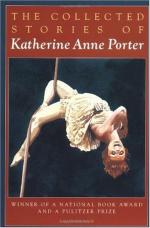|
This section contains 5,826 words (approx. 20 pages at 300 words per page) |

|
SOURCE: “‘Endless Remembering’: The Artistic Vision of Katherine Anne Porter,” in Mississippi Quarterly, Vol. 40, No. 1, Winter, 1986–1987, pp. 5–19.
In the following essay, Brinkmeyer considers the role of memory in Porter's work, concluding that her “exploration of memory places her in the company of a number of other modern Southern writers who made similar if less extreme quests.”
In the mid-to-late 1920s Katherine Anne Porter began showing a strong interest in the South and her Southern upbringing. Before this time, she could have been called a “rebel” only in the sense of being a woman scornful of tradition and authority. Early in her life she had acted out her rebelliousness by marrying, at age sixteen, Alfred Koontz, a clerk for the Southern Pacific Railway, and by converting shortly thereafter to the religion of his family, Roman Catholicism. Later, during the late teens and early 1920s, after having left Koontz, Porter...
|
This section contains 5,826 words (approx. 20 pages at 300 words per page) |

|


